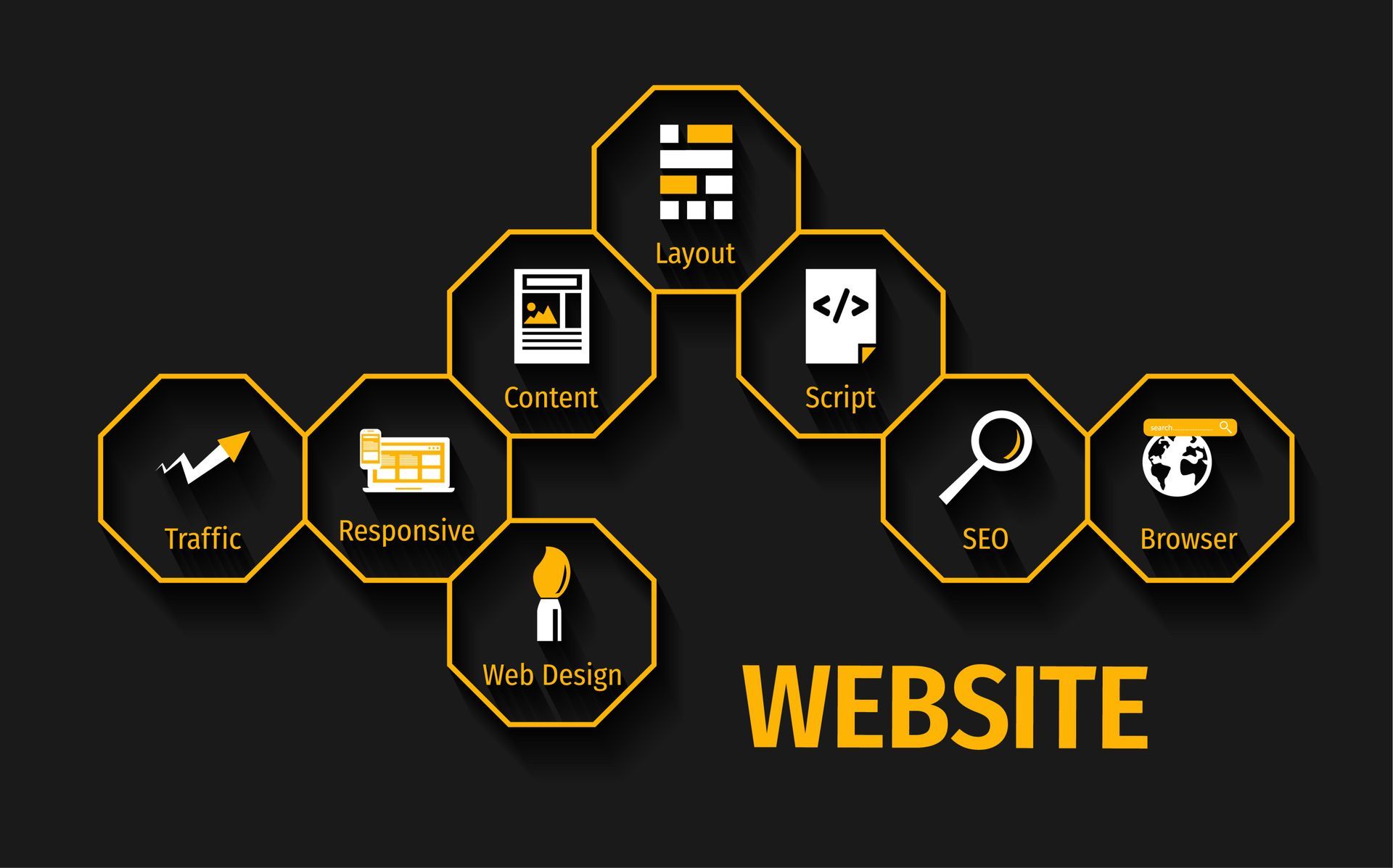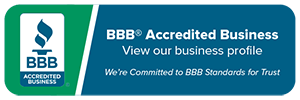What Does It Take to Have Successful Business Website
David Siler
10 Essential Elements Every Small Business Website Must Have to Succeed

In today’s digital landscape, a strong online presence is essential for small businesses looking to thrive. Your website is often the first point of contact with potential customers, and making a lasting impression is vital. But what exactly makes a website not just good, but great? To stand out in a crowded marketplace, it’s essential to incorporate the right elements that drive engagement and conversions. In this article, we’ll explore the ten essential elements every small business website must have to succeed. From user-friendly design and compelling content to streamlined navigation and robust SEO strategies, each component plays a critical role in enhancing user experience and building trust with your audience. Whether you're launching a new venture or revamping an existing site, these essentials will help you create a powerful online platform that attracts customers and fosters growth. Ready to elevate your website? Let’s dive in!
Importance of a User Friendly Design
Creating a user-friendly design is fundamental to the success of any small business website. When visitors land on your website, their first impression is often based on the visual layout and ease of navigation. An intuitive design helps users find the information they need quickly and effortlessly, which significantly enhances their overall experience. This means organizing content logically, using clear headings, and ensuring that buttons and links are easily identifiable. A cluttered or confusing design can frustrate visitors, causing them to leave your site prematurely, which ultimately hurts your chances of converting them into customers.
A user-friendly design also involves optimizing page load times. Studies have shown that users are likely to abandon a website if it takes longer than three seconds to load. Therefore, it's crucial to ensure that your website is fast and responsive. This can be achieved by optimizing images, leveraging browser caching, and minimizing the use of heavy scripts. Additionally, employing clean code practices can help improve load times and overall website performance. The faster and smoother your website operates, the more likely visitors are to stay and engage with your content.
Moreover, accessibility is a key component of user-friendly design. This means making your website usable for people with disabilities by incorporating features such as alt text for images, keyboard navigation, and screen reader compatibility. Ensuring that your website meets accessibility standards not only broadens your audience but also demonstrates your commitment to inclusivity. This can enhance your reputation and build trust with all visitors, including those who may have specific accessibility needs. Overall, a user-friendly design is about creating a seamless, enjoyable experience that encourages visitors to explore your site and take action.
Mobile Responsiveness: Why It Matters
In today's mobile-centric world, ensuring your website is mobile responsive is no longer optional—it's a necessity. Mobile responsiveness refers to the ability of a website to adapt its layout and functionality to different screen sizes and devices. With the increasing number of people accessing the internet via smartphones and tablets, having a mobile-friendly website is crucial for reaching a wider audience. A mobile responsive design ensures that your site looks good and works well on any device, providing a consistent user experience regardless of how visitors access your site.
One of the primary reasons mobile responsiveness matters is due to user behavior. Mobile users often browse websites on the go, seeking quick and easy access to information. If your website is not optimized for mobile devices, users may struggle with navigation, encounter distorted layouts, or experience slow load times. These issues can lead to frustration and prompt users to leave your site in favor of a competitor's mobile-friendly site. By prioritizing mobile responsiveness, you can provide a seamless experience that keeps mobile users engaged and encourages them to return.
Another critical factor is search engine optimization
(SEO). Search engines like Google prioritize mobile-friendly websites in their search results, meaning that if your site is not optimized for mobile, it may rank lower in search engine results pages (SERPs). This can significantly impact your visibility and organic traffic. Google uses mobile-first indexing, which means it primarily uses the mobile version of your website for ranking and indexing. Therefore, a mobile responsive design is essential not only for user experience but also for improving your site's SEO performance and visibility.
Clear and Compelling Content
Content is the backbone of any website, and for small businesses, it plays a pivotal role in attracting and retaining customers. Clear and compelling content effectively communicates your brand's message, values, and offerings. It should be tailored to your target audience, addressing their needs and interests in a language they understand. It is much more important to have a high quality content than it is to have lots of pages, High-quality content builds trust and credibility, positioning your business as an authority in your industry. This can lead to increased engagement, higher conversion rates, and stronger customer loyalty. This is where leads for your business come from!
To create compelling content, it's essential to focus on clarity and conciseness. Avoid jargon and overly complex language that might confuse or alienate your audience. Instead, use straightforward language and break down information into digestible chunks. Utilizing headings, bullet points, and short paragraphs can help make your content more readable Importance of a User-Friendly Design
In the digital age, first impressions matter more than ever. The design of your website is often the first thing visitors notice, and a user-friendly design can make a significant difference in how they perceive your business. A clean, intuitive design ensures that visitors can easily navigate your site, find the information they need, and engage with your content. This is crucial for keeping potential customers on your site and encouraging them to explore further. A cluttered or confusing layout, on the other hand, can drive visitors away and harm your business's credibility.
User-friendly design goes beyond aesthetics; it includes functionality and usability. Elements such as easy-to-read fonts, well-organized menus, and prominent buttons contribute to a seamless user experience. Additionally, an effective design should cater to all types of users, including those with disabilities. Implementing accessibility features such as alt text for images, keyboard navigation, and readable color contrasts can make your site welcoming to everyone. This inclusive approach not only broadens your audience but also demonstrates that your business values all customers.
Moreover, a user-friendly design should be consistent across all pages of your website. This consistency helps build trust and familiarity with your visitors, making it easier for them to navigate and find what they are looking for. Consistent branding elements like logos, color schemes, and typography reinforce your brand identity and contribute to a cohesive experience. By investing in a thoughtful, user-centric design, you can create a powerful online presence that engages visitors and encourages them to become loyal customers.
Effective Call-to-Action (CTA) Strategies
A well-crafted call-to-action (CTA) is essential for guiding visitors towards desired actions, whether it's signing up for a newsletter, making a purchase, or contacting your business. CTAs should be clear, concise, and compelling, encouraging visitors to take the next step. Placement, design, and wording all play critical roles in the effectiveness of your CTAs.
Strategically placing CTAs throughout your website can increase engagement and conversions. They should be positioned where visitors are most likely to notice them, such as at the end of blog posts, on product pages, or in the header or footer. The design of your CTAs should make them stand out without being obtrusive. Use contrasting colors, bold text, and clear buttons to draw attention to your CTAs. Additionally, the wording should create a sense of urgency or value, such as "Get Started," "Join Now," or "Learn More."
Testing and optimizing CTAs are crucial for maximizing their effectiveness. Use A/B testing to compare different versions of your CTAs and determine which ones perform best. Experiment with different colors, placements, and wording to see what resonates most with your audience. Analyze the data to understand user behavior and refine your strategies accordingly. By continually optimizing your CTAs, you can improve user engagement and drive more conversions.
Search Engine Optimization (SEO) Basics
Search Engine Optimization
(SEO) is fundamental for increasing your website's visibility and attracting organic traffic. SEO involves optimizing your site to rank higher in search engine results for relevant keywords. Understanding and implementing basic SEO strategies can significantly impact your site's performance and reach.
Keyword research is the foundation of SEO. Identify the keywords and phrases that your target audience is likely to use when searching for products or services like yours. Use tools like Google Keyword Planner or SEMrush to find high-volume, low-competition keywords. Incorporate these keywords naturally into your content, meta tags, and URLs. Avoid keyword stuffing, as it can harm your rankings and make your content less readable.
On-page and off-page SEO are both critical. On-page SEO focuses on elements within your site, such as title tags, meta descriptions, header tags, and image alt text. Ensure that these elements are optimized with relevant keywords. Off-page SEO involves external factors like backlinks from reputable sites, social media signals, and online reviews. Building high-quality backlinks can boost your site's authority and improve your search rankings. Additionally, ensure your site has a fast loading speed, mobile responsiveness, and a secure HTTPS connection, as these factors also influence SEO.
Essential Contact Information and Accessibility
Providing essential contact information and ensuring accessibility are vital for building trust and facilitating communication with your audience. Visitors should be able to easily find ways to contact your business, whether it's through phone, email, or a contact form. Clearly display your contact information on your homepage, footer, and contact page.
Accessibility goes hand-in-hand with contact information. Your site should be designed to accommodate all users, including those with disabilities. Implementing accessibility features such as screen reader compatibility, text resizing options, and keyboard navigation can make your site more inclusive. Additionally, provide multiple contact methods to cater to different preferences. Some users may prefer calling, while others might opt for email or live chat.
Including a detailed contact page can enhance user experience. This page should provide all necessary contact information, including your business address, phone number, email, and social media links. Consider adding a map for location-based businesses, as well as a contact form for convenience. Ensure that your contact page is easy to navigate and visually appealing. By offering clear and accessible contact options, you can build trust and encourage visitors to reach out.
Integrating Social Media Links
Integrating social media links into your website is essential for expanding your online presence and fostering engagement. Social media platforms offer valuable opportunities for connecting with your audience, sharing content, and promoting your brand. Including social media links on your website can drive traffic to your profiles and encourage visitors to follow and interact with your business.
Placement of social media
links is crucial for visibility and effectiveness. These links should be prominently displayed on your homepage, footer, and contact page. Consider adding social share buttons to your blog posts and product pages, allowing visitors to easily share content with their networks. Use recognizable social media icons and ensure they are consistent with your site's design.
Social media integration goes beyond simply adding links. It involves actively engaging with your audience on these platforms. Share updates, respond to comments, and participate in relevant conversations to build a strong online community. Additionally, use social media analytics to track engagement and understand user behavior. This data can help you refine your strategies and improve your social media presence. By effectively integrating social media links, you can enhance your website's reach and foster meaningful connections with your audience.
Customer Testimonials and Reviews
Customer testimonials and reviews are powerful tools for building trust and credibility. They provide social proof, showing potential customers that others have had positive experiences with your business. Featuring testimonials and reviews on your website can enhance your reputation and encourage visitors to make a purchase or contact your business.
Displaying testimonials and reviews should be strategic. Highlight them on your homepage, product pages, and dedicated testimonial sections. Use quotes, star ratings, and detailed feedback to showcase the value your business offers. Consider incorporating multimedia elements like video testimonials for added impact. Ensure that the testimonials and reviews are authentic and relevant to your target audience.
Encouraging customers to leave reviews is also important. Provide easy-to-use review forms and offer incentives for feedback, such as discounts or loyalty points. Actively respond to reviews, both positive and negative, to show that you value customer input. Addressing negative reviews professionally and promptly can improve customer satisfaction and demonstrate your commitment to excellence. By leveraging customer testimonials and reviews, you can build trust, enhance credibility, and drive conversions.
Conclusion: Building a Successful Online Presence
Building a successful online presence requires a comprehensive approach, integrating various elements that enhance user experience and drive engagement. From user-friendly design and mobile responsiveness to clear content and effective CTAs, each component plays a critical role in creating a powerful website. Incorporating robust SEO strategies, essential contact information, social media links, and customer testimonials further strengthens your online platform.
Investing in these essential elements can significantly impact your business's success. A well-designed, responsive website that offers valuable content and seamless navigation can attract and retain customers, fostering growth and loyalty. Continuous optimization and responsiveness to user feedback are key to maintaining a strong online presence. Regularly update your site, test different strategies, and adapt to changing trends to stay ahead of the competition.
Ultimately, your website design is a reflection of your business. It should convey your brand's message, values, and offerings effectively. By prioritizing user experience and incorporating these essential elements, you can create a website that not only stands out but also drives meaningful engagement and conversions. Elevate your online presence by implementing these strategies and watch your small business thrive in the digital landscape.

A strong online presence starts with a website—and in 2025, it's no longer optional. In this blog, we break down why every small business needs a website to stay competitive, build credibility, attract new customers, and grow. Whether you're just starting out or looking to expand, this post explains how a website can be one of your most powerful business tools.

In today's digital age, establishing a solid online reputation is crucial for small business owners, entrepreneurs, and marketers aiming to attract clients and boost their visibility. A well-optimized Google Business Profile can significantly enhance your local SEO, making your business more discoverable in local search results. Positive customer reviews not only build trust but also amplify your business's reach, transforming satisfied clients into enthusiastic advocates. In this post, we'll dive into the essentials of optimizing your business profile, encourage happy customers to leave glowing reviews, and demonstrate how these strategies can drive traffic and ultimately increase sales. Get ready to transform your business's online presence into a powerful tool for success!

Digital marketing for small businesses. In today's fast-paced digital world, mastering the art of digital marketing can be the key to unlocking your business's full potential. With consumers spending more time online than ever, establishing a strong presence is vital for capturing their attention and fostering brand growth. This post will guide you through simple yet effective online visibility strategies, from harnessing the power of social media marketing to enhancing your search engine optimization efforts. We'll dive into customer engagement tactics and explore how content marketing can help you connect with your target audience. Get ready to boost your business and pave the way for sustainable success by implementing these accessible and impactful strategies.






